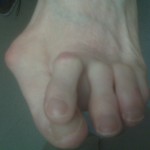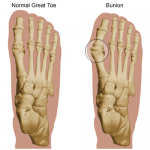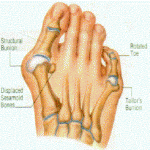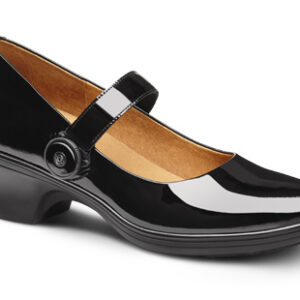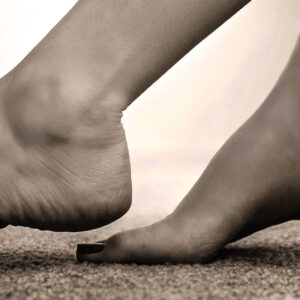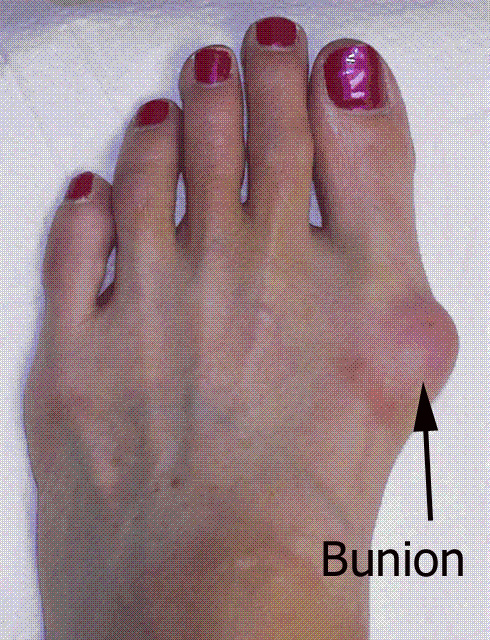
Bunion deformity with localized inflammation
A hallux abducto valgus (HAV) deformity, commonly called a bunion, is a deformity characterized by lateral deviation of the great toe, often erroneously described as an enlargement of bone or tissue around the 1st metatarsalphalangeal joint (MTPJ).
Bunions are caused by a combination of genetic factors like foot type and environmental factors. As pressure is applied, the tissues surrounding the joint may become swollen and tender.
The bump itself is partly due to the swollen bursal sac or an osseous (bony) anomaly on the metatarsophalangeal joint. The larger part of the bump is a normal part of the head of the first metatarsal bone that has tilted sideways to stick out at its head.
- Bunion deformiy with overlapping toes.
- As seen with this foot model the first metatarsal associated with the bunion creates a larger angle with the 2nd metatarsal
- Deviation of the 1st metatarsal usually pulls the sesmoids out of alignment
The symptoms of bunions include irritated skin around the bunion, pain when walking, joint redness and pain, and possible shift of the big toe laterally toward the other toes. Blisters may form more easily around the site of the bunion as well.
Having bunions can make it more difficult to find shoes that fit properly; bunions may force a person to buy a larger size shoe to accommodate the width the bunion creates. When the bunion deformity becomes severe, no shoe may fit.
Bunions may be treated conservatively with changes in shoe gear, orthotics, accommodative padding and shielding, rest, ice and anti-inflammatory medications. These sorts of treatments address symptoms rather than correct the actual deformity. Surgery, by a podiatric surgeon, may be necessary if discomfort is severe or when correction of the deformity is desired.

